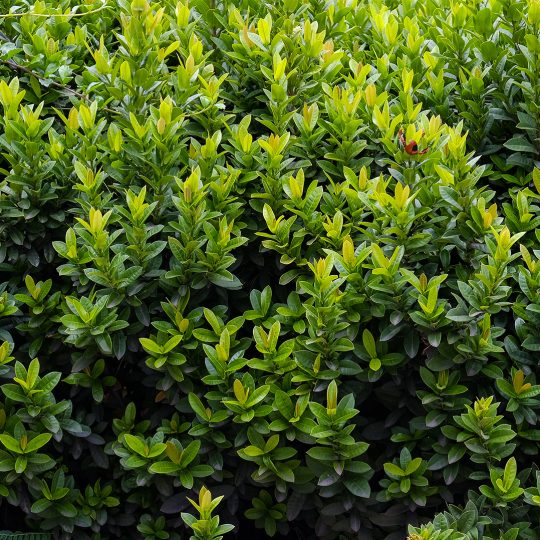Inspecting Shrubs
3 Factors to Focus On
Posted
January 11, 2018

Whether you’ve planted shrubs as a natural barrier, garden accent, or simply for its greenery, they need regular maintenance to thrive. It’s best to run inspections once every season, since issues could appear only certain times of the year. If this isn’t feasible, once a year is better than nothing. There are three main factors to focus on when inspecting shrubs: overall health, signs of disease, and soil condition.
Inspecting Shrubs Overall Health
Evaluate the overall look and feel of your plants. Notice how it’s growing, its size and structure, and leaf color. Inspect the canopy to the trunk and the branches in between. Document your findings to reference later in the year and compare the results.
Signs of Disease
Depending on the season, there could be signs of disease, decay, and pests throughout the plant. Changes in the leaves are the easiest to spot, but the branches can also show signs of deterioration. Other non-living factors could effect plant health, such as buried root collars and soil compaction.
Inspecting the Soil
Testing the soil can help determine whether the plant needs more or less nutrients and water. Use your findings to adjust your fertilizing and watering schedules.
Professional Shrub Inspection
Regular shrub inspections by a trained professional are the best way to identify possible plant issues and fix them before they become serious.
It’s easier and cheaper to prevent problems than to deal with them after damage is already done. If you have the time and know-how, inspect your shrubs on a regular basis. If not, hire a professional to do so and make the most of your lawn and garden investment. Contact Cardinal Lawns at 614-808-4446 to schedule an inspection today.

Download Your FREE Summer Plant Care Guide
Help your plants make it through a hot & dry summer looking like a million bucks with our summer plant watering and maintenance guide!